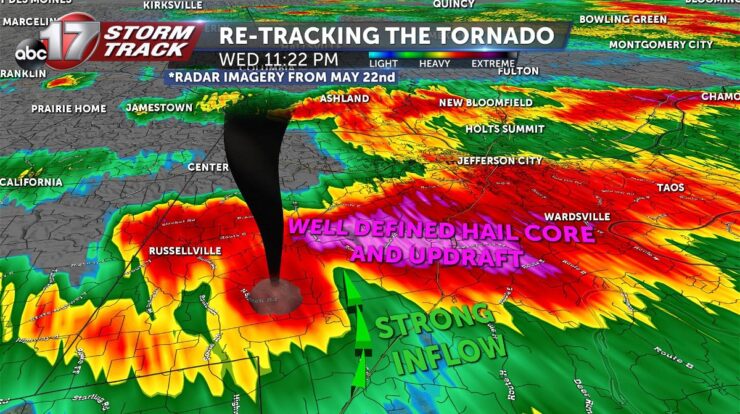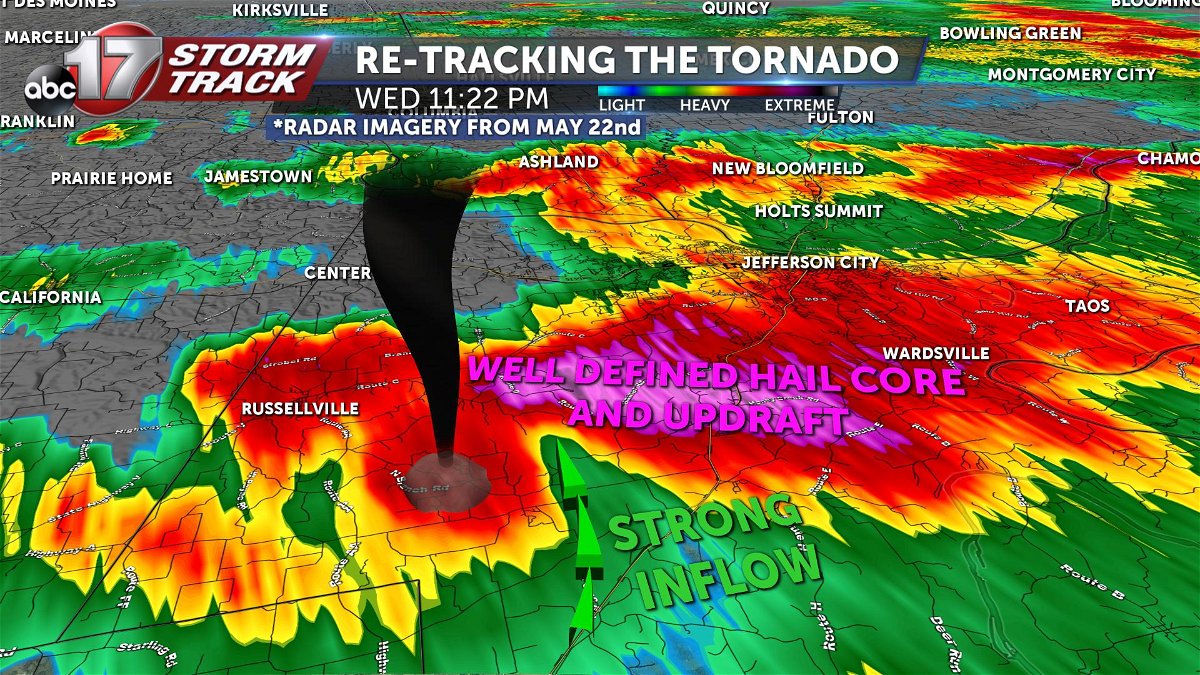
Unveiling the Tornado Tracker: A cutting-edge tool that empowers individuals and communities to stay ahead of the curve in the face of unpredictable tornadoes. This comprehensive guide delves into the world of tornado tracking, exploring its features, benefits, and the crucial role it plays in safeguarding lives and property.
With the increasing frequency and intensity of tornadoes, the need for reliable and accurate tracking systems has become paramount. Tornado trackers have emerged as a game-changer in this regard, providing real-time data and insights that empower us to make informed decisions when it matters most.
Introduction
A tornado tracker is a device that detects and tracks tornadoes. It uses a variety of sensors to measure atmospheric conditions, such as wind speed, pressure, and temperature. This data is then used to create a map of the tornado’s path and intensity.
Tornado trackers are an important tool for meteorologists and emergency managers. They help to provide early warning of tornadoes, which can give people time to take shelter and avoid injury or death.
Features and Capabilities
Tornado trackers come with a variety of features and capabilities, including:
- Real-time tracking: Tornado trackers can track tornadoes in real time, providing up-to-date information on their location and intensity.
- Advanced warning: Tornado trackers can provide advanced warning of tornadoes, giving people time to take shelter.
- Mobile alerts: Tornado trackers can send mobile alerts to users when a tornado is detected, providing them with the information they need to stay safe.
- Historical data: Tornado trackers can store historical data on tornadoes, which can be used to identify patterns and trends.
Benefits of Using a Tornado Tracker
There are many benefits to using a tornado tracker, including:
- Improved safety: Tornado trackers can help to improve safety by providing early warning of tornadoes, giving people time to take shelter.
- Reduced property damage: Tornado trackers can help to reduce property damage by providing information on the path and intensity of tornadoes, allowing people to take steps to protect their property.
- Enhanced preparedness: Tornado trackers can help to enhance preparedness by providing information on the likelihood of tornadoes in a given area, allowing people to make plans to stay safe.
Types of Tornado Trackers
There are two main types of tornado trackers:
- Mobile tornado trackers: Mobile tornado trackers are small, portable devices that can be used to track tornadoes from a vehicle. They are typically less expensive than stationary tornado trackers, but they have a shorter range.
- Stationary tornado trackers: Stationary tornado trackers are large, fixed devices that are typically installed on towers or buildings. They have a longer range than mobile tornado trackers, but they are more expensive.
How to Choose a Tornado Tracker
When choosing a tornado tracker, it is important to consider the following factors:
- Accuracy: The accuracy of a tornado tracker is determined by its ability to detect and track tornadoes. The best tornado trackers have a high accuracy rate, which means that they are able to detect and track tornadoes even in difficult conditions.
- Range: The range of a tornado tracker is determined by the distance at which it can detect and track tornadoes. The best tornado trackers have a long range, which means that they can detect and track tornadoes from a greater distance.
- Ease of use: The ease of use of a tornado tracker is determined by how easy it is to operate and interpret the data. The best tornado trackers are easy to use, which means that they can be used by people with little or no experience.
Using a Tornado Tracker

To use a tornado tracker, follow these steps:
- Place the tornado tracker in a location where it will have a clear view of the sky.
- Turn on the tornado tracker and wait for it to calibrate.
- Monitor the tornado tracker for any signs of a tornado.
- If a tornado is detected, take shelter immediately.
Limitations and Accuracy of Tornado Trackers
Tornado trackers are not perfect. They have some limitations, including:
- False alarms: Tornado trackers can sometimes issue false alarms, which means that they detect a tornado when there is none. This can be a problem because it can lead to people taking unnecessary shelter.
- Missed tornadoes: Tornado trackers can sometimes miss tornadoes, which means that they do not detect a tornado when there is one. This can be a problem because it can lead to people being caught off guard by a tornado.
- Accuracy: The accuracy of tornado trackers can be affected by a number of factors, such as the weather conditions and the terrain.
Future Developments in Tornado Tracking Technology: Tornado Tracker
There are a number of new technologies that are being developed to improve the accuracy and range of tornado trackers. These technologies include:
- Dual-polarization radar: Dual-polarization radar is a new type of radar that can provide more information about the size and shape of tornadoes. This information can be used to improve the accuracy of tornado trackers.
- Phased-array radar: Phased-array radar is a new type of radar that can scan a wider area more quickly than traditional radars. This can help to improve the range of tornado trackers.
- Artificial intelligence: Artificial intelligence is being used to develop new algorithms for tornado tracking. These algorithms can help to improve the accuracy and range of tornado trackers.
Conclusive Thoughts
In conclusion, tornado trackers have revolutionized the way we monitor and respond to these destructive forces of nature. Their ability to provide timely warnings, pinpoint the location and path of tornadoes, and assess their intensity has significantly enhanced our preparedness and safety measures.
As technology continues to advance, we can expect even more sophisticated and effective tornado tracking systems in the future, further strengthening our resilience against these formidable weather events.
FAQs
What is the primary function of a tornado tracker?
Tornado trackers are designed to detect, track, and provide real-time information on tornadoes, including their location, direction of movement, and intensity.
How do tornado trackers enhance safety and preparedness?
By providing early warnings and accurate data on tornado activity, tornado trackers empower individuals and communities to take timely protective actions, such as seeking shelter or evacuating affected areas.
What factors can affect the accuracy of tornado trackers?
Factors such as terrain, weather conditions, and the availability of real-time data can influence the accuracy of tornado trackers.






